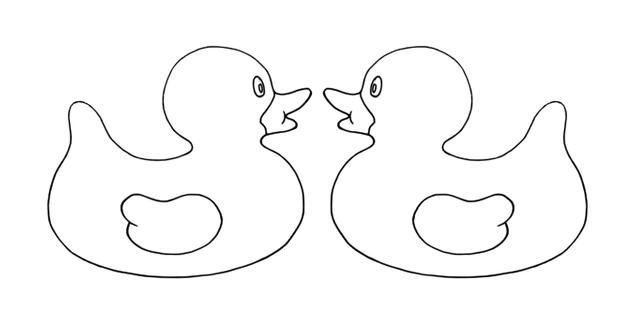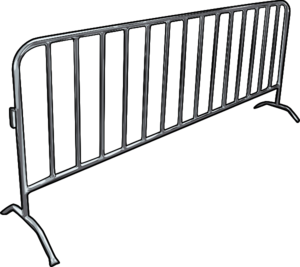I admit to trepidation when I find a trust deed for a family discretionary trust (FDT) has a power allowing the trustee to add anyone as beneficiary of the trust – an add anyone power (AAOP). Why should this be of concern?

The three certainties
The essentials of a valid trust are certainty of:
1. intention to create the trust;
2. subject matter (trust property); and
3. objects.
Certainty of objects means certainty of beneficiaries of the trust. Potentially a power like an AAOP is not only invalid itself but can invalidate the whole trust causing the trust to fail. In the case of a FDT that means the property is not held for beneficiaries as set out in the deed but is instead returned, or held for return, to whoever gave property on trust to, or settled trust property on, the trustee.
The risk that trust terms of a FDT meant to delineate its beneficiaries may themselves fail can be opaque.
When a trust has certainty of objects
Traditionally, to comply with the certainty of objects essential for a trust, a trustee of supposed trust needed to satisfy the complete list test. That is, for a trust to be valid , the trustee, or a court, had to be able to compile a complete and exhaustive list of all beneficiaries of the trust.
Under the complete list test, a trustee or court needs to be able to:
- identify all beneficiaries within each class of beneficiary with certainty; and
- ensure that no potential beneficiary was omitted or left indeterminate.
A trust with an AAOP clearly fails the complete list test.
The complete list test generally remains critical to trusts including fixed trusts in determining whether a trust has certainty of objects needed for a valid trust.
A dovetail
However, in the latter half of the last century, English courts were confronted with trust terms for discretionary trusts with large or diffuse classes of beneficiaries. These beneficiaries were only to participate in the property of the trust on the exercise of a discretion in their favour. These were not FDTs but discretionary trusts with a wider range of potential beneficiaries whom the founder sought to benefit selectively.
In these cases it was realised that complete list certainty worked well for fixed trusts but worked less well as a way to scope who may be benefit under these kinds of discretionary trusts. There was a tension between the complete list test, and giving wide flexibility in the selection of beneficiaries to take, where a precision more appropriate to fixed trusts was required.
McPhail v. Doulton – the is or is not test adopted in England
So in McPhail v. Doulton [1970] UKHL 1, the House of Lords relaxed the complete list requirement for certainty of objects of a discretionary trust and found that beneficiaries of the trust were sufficiently certain where an is or is not test could be satisfied. That is, a discretionary trust can be valid where it is possible for the trustee or a court to determine if any given person is or is not a beneficiary within the trust terms. This wasn’t an original formulation but drew on the same test applicable to the validity of trust powers which by then had been expressed in Re Gulbenkian’s Settlement Trusts (No 1) | [1968] UKHL 5.
Thus the court in McPhail v. Doulton recognised that a discretionary trust should not simply be treated as a trust but as an exceptional mix of a trust and power/s with the is or is not test relevant to ascertain whether powers granted in trust terms meet certainty of objects standards.
The is or is not test itself needed further elaboration in McPhail v. Doulton. On the remand of the case, in Re Baden’s Deed Trusts (No 2) [1972] EWCA Civ 10, the UK Court of Appeal demarcated between conceptual uncertainty, where it is uncertain a person is a beneficiary under terms, and evidential uncertainty where it is uncertain that a person is beneficiary because it cannot be proven that he, she or it is a member of a conceptually sound class of beneficiaries. It was found that a discretionary trust will fail under the is or is not test in the case of conceptual uncertainty but will not fail in the case of evidential uncertainty unless that uncertainty makes administration of the discretionary trust impracticable.
Applying the is or is not test to an AAOP in a FDT
Where someone can only be a discretionary beneficiary of a FDT on the later exercise of a AAOP by a trustee of a FDT it is impossible to tell, just from the FDT terms, whether or not the person is or is not a beneficiary. It follows that a FDT with these terms fails the is or is not test.
But since McPhail v. Doulton courts have taken a piecemeal approach to the is or is not test focusing on the kind of power the donee of the power can exercise within the framework of the discretionary trust. The focus is then on whether a power or powers within trust terms have sufficient certainty of objects with the level of certainty required depending on the kind of power concerned.
The certainty of objects for different kinds of powers to appoint i.e. give or benefit beneficiaries with trust capital or trust income within a discretionary trust is now generally understood to be:
| Power Type | Definition | Key Features |
|---|---|---|
| Special Power | A power to appoint property to a defined and limited group of beneficiaries. |
|
| Intermediate (Hybrid) Power | A power to appoint property to a broad class of beneficiaries, subject to exclusions. |
|
| General Power | A power to appoint property to anyone, including the donee of the power. |
|
From this table it is evident that where a purely general power of the trustee or other donee can be isolated certainty of objects requirements are even more relaxed to no requirement at all viz. no requirement even to apply the is or is not test which is akin to the unlimited rights an absolute owner of property enjoys.
Extent of invalidation
Does it follow that, in the case of a FDT with an AAOP, the AAOP is a power that can be isolated and considered separately from other powers of the trustee under a FDT? Other powers usually found in a FDT where the is or is not test does apply include the power to appoint income at the end of an income year and the power to appoint capital on the vesting of the FDT to a particular discretionary beneficiary. Further, in the case of an uncertain power, it could be that only the supposed power itself, and not all trust terms, that will be invalid and won’t be exercisable where only the power is uncertain. That is the approach that appears to have been taken in Evans v. Commissioner of Taxation (1988) 19 ATR 1784, (1988) 88 ATC 4771.
In Evans v. Commissioner of Taxation a deed of a FDT gave the trustee a power to add beneficiaries of the FDT in clause 10 of the trust deed in these terms:
At any time prior to the vesting date, the Trustee may, …, by deed … vary any of the trusts, powers, discretion, or duties herein set forth in any manner whatsoever, including … enlarging any category of eligible beneficiaries and adding a further class of eligible beneficiaries, PROVIDED HOWEVER that no exercise of this power of variation shall be capable of conferring any interest in the trust fund upon the Settlor, and any alteration which would otherwise do so shall, to that extent, be ineffective.
Fisher J. of the Federal Court identified the power to add beneficiaries as a hybrid or intermediate power which, with the exclusion of the settlor of the FDT only slightly differed from a general power, was found not be invalid for these reasons:
On the assumption that the purported addition of Orebody Investments as an eligible beneficiary was prima facie an effective exercise of power under clause 10, counsel contended that the clause was void for uncertainty. He described the clause as conferring a power which was a “hybrid or intermediate power” and was administratively unworkable. He cited McPhail v Doulton [1971] AC 424, especially at 457, and Re Hay’s Settlement Trusts [1982] 1 WLR 202 at 213 as authority for this proposition.
A contrary authority is Re Manisty’s Settlement [1974] Ch 17, a decision of Templeman J (as he then was), which counsel for the Commissioner contended was either distinguishable or ought not to be followed in Australia. In that matter, his Lordship had to consider a power to add to the class of beneficiaries which was said to be an intermediate power and wider than any special power as it was practically unlimited. Thus, it was contended that the power was too wide, uncertain, and invalid. However, he declined to apply the requirement of class certainty to mere powers as opposed to trust powers.
This case and its reasoning have been approved in Australia by the authors of Jacobs’ Law of Trusts in Australia (5th ed, p 345, para 258), and by Professor R. P. Austin in an article entitled “A Survey of Recent Cases in the Law of Trusts.” Likewise, Megarry VC applied Re Manisty’s Settlement in Re Hay’s Settlement Trusts, where at 212 the Vice-Chancellor said:
Nor do I see how the power in the present case could be invalidated as being too vague, a possible ground of invalidity considered in Re Manisty’s Settlement, at 24. Of course, if there is some real vice in a power, and there are real problems of administration or execution, the court may have to hold the power invalid: but I think that the court should be slow to do this. Dispositions ought, if possible, to be upheld, and the court ought not to be astute to find grounds upon which a power can be invalidated. Naturally, if it is shown that a power offends against some rule of law or equity, then it will be held to be void: but a power should not be held void upon a peradventure. In my judgment, the power conferred by clause 4 of the settlement is valid.
It is my opinion that I should refrain from declaring clause 10 void for uncertainty in these proceedings, as sought by the Commissioner, not only because I find in his favour on this aspect of the appeals on another ground but also because the matter was not argued in depth. Furthermore, any such finding could have an impact upon persons not before the court, even though they would not be bound by the finding. I am not considering the matter as a court of construction and hearing all parties interested in various possible interpretations.
Can a trustee of a FDT rely on Evans v. Commissioner of Taxation?
So Evans v. Commissioner of Taxation, a decision of a single judge of the Federal Court, does not purport to be immutable authority on the issue of uncertainty of a wide intermediate or hybrid power was not isolated from the or a general power, such as an AAOP, in a FDT. Further, the correctness of the decision is open to doubt as the intermediate or hybrid power of the trustee: the appoint anyone other than the settlor power in clause 10 of the trust deed, was not isolated from other trust powers/duties of the trustee to which the is or is not test does apply. That is the appoint anyone other than the settlor power in clause 10 cannot be decoupled from the other trust terms which uncertain alteration of who can be a beneficiary impacts including in Evans v. Commissioner of Taxation:
- the power to appoint income at the end of an income year: sub-clause 3(a); and
- the power to appoint capital on the vesting of the FDT: clause 4;
which were trust duties of the trustee to perform under the deed which each need to comply with the is or is not test and, further, core trust duties on which the validity of the whole trust stands.
Impact of takers-in-default of appointment on a trust power to appoint
My questioning of the decision in Evans v. Commissioner of Taxation relies on an understanding that the power to appoint income at the end of an income year and the power to appoint capital on the vesting of the FDT are trust powers/duties that significantly differ from a general power or a wide intermediate or hybrid power. In an Australian FDT this distinction can be fine because powers to appoint income or capital on vesting in a FDT will generally specify takers-in-default of appointment. However, generally in a FDT, as in McPhail v. Doulton, the presence of gifts over in default of appointment does not eliminate the duty or obligation on the trustee to perform its obligation: that is, to exercise its discretion and select beneficiaries to take. A gift over in default of appointment acts no more than as a failsafe in the event that the trustee fails to exercise its discretion, say in breach of trust. That is a gift over in default gives no liberty to the trustee of a FDT not to exercise their discretion like an absolute owner of property has.
If I am correct and an AAOP with uncertain objects cannot be isolated from obligatory trust powers to appoint income at the end of an income year and the power to appoint capital then it may be possible to manage the certainty of objects by having the trustee (donee) leaving an impugned AAOP dormant. By desisting to use the AAOP the trustee can ensure that beneficiaries selected under the appointment powers continue to meet the is or is not test despite the presence of the AAOP in the trust terms. Perhaps a additional beneficiary or beneficiaries could be added to the FDT is some other way? With the aid of the principle on which Evans v. Commissioner of Taxation, ultimately relies viz.
Dispositions ought, if possible, to be upheld, and the court ought not to be astute to find grounds upon which a power can be invalidated.
supra.
desisiting from exercising the impugned AAOP to add a person as a beneficiary and appointing income or capital to that person may save a trust from invalidity.
Conclusion
It follows that, despite Evans v. Commissioner of Taxation, an AAOP in the trust terms of a FDT may run risk of being invalid with chaotic outcomes where the trust that so fails was thought to hold significant property. Thank kind of clause appears reckless and unnecessary when parameter or parameters of a trust class can be readily designed so that beneficiaries can be added to a trust within the wide certainty that the is or is not test allows.









